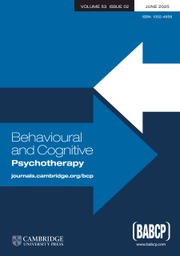Article contents
Should We Intervene to Modify Type A Behaviours in Patients with Manifest Heart Disease?
Published online by Cambridge University Press: 16 June 2009
Abstract
Until the mid 1980s Type A Behaviour (TAB) was considered to confer the same magnitude of risk for CHD as smoking, hypertension and raised serum cholesterol. As such, it was considered a suitable target for modification, particularly in post-infarction populations. More recently, three arguments have been suggested that counter such optimism: (i) recent evidence may suggest TAB is not predictive of heart disease in post-infarction populations; (ii) interventions do not influence physiological processes underpinning TAB and, accordingly, do not reduce risk for disease progression; (iii) there are other, more useful, interventions that may be conducted with cardiac patients. The validity of each of these challenges is critically examined. It is concluded that interventions to modify TAB in patients with manifest heart disease are still of value in reducing risk for further disease progression.
Information
- Type
- Research Article
- Information
- Copyright
- Copyright © British Association for Behavioural and Cognitive Psychotherapies 1994
References
- 4
- Cited by


Comments
No Comments have been published for this article.